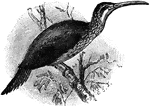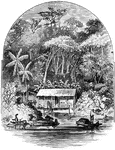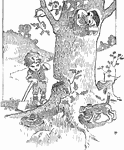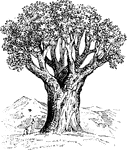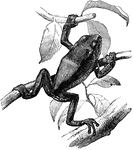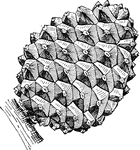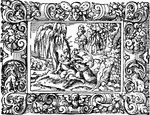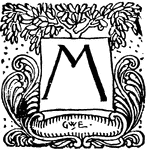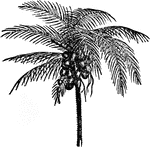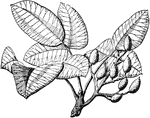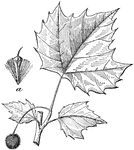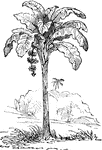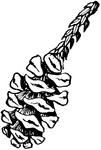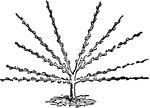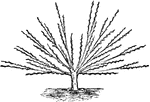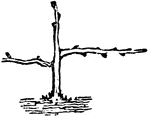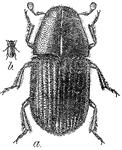
Beetle
This is an illustration of the pine-destroying beetle of the Black Hills; a, adult beetle, enlarged;…
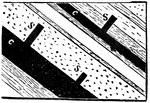
Coal Beds
This illustration shows coal-beds with stumps of trees rising out of the coal. The stumps always stand…
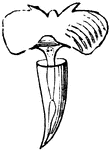
Cleodora
Cleodora refers to a genus of plants in the family Euphorbiaceae. The best known member of this genus…

Tree Asp
The narrow ended dendroaspis, otherwise known as the tree asp, tree snake, or mamba. It is about 6 feet…
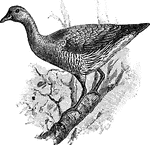
Australian Tree Duck
A duck with a bill longer than its head and curved downward. Its legs are long and fitted with bird…
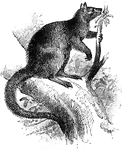
Tree Kangaroo
They are adapted for arboreal life, having the tail less robust tan that of the ground kangaroos, and…
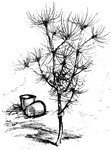
Parasol Pine
A species of pine native to southern Europe. It is widely known for its edible pine nuts since prehistoric…
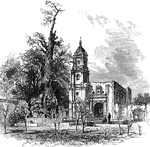
Tree of Triste Noche
Tree of Triste Noche represents the remains of the tree under which Cortes and his followers gathered…
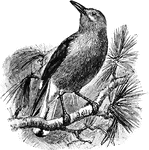
American Nutcracker
A bird with its plumage gray, with black and white wings and tail. Feeds on mostly pine nuts.
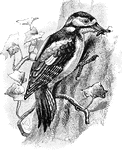
Great Spotted Woodpecker
A loud bird that uses it beak to bore holes in tree trunks to feed on bugs.
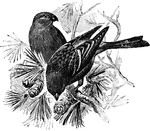
Pine Grosbeak
A large fringilline bird of Europe and North American found chiefly in coniferous woods in northerly…
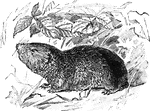
Pine Mouse
A North american meadow mouse. About 4 inches long of a rich dark reddish brown color, with very smooth,…
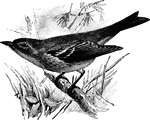
Pine Warbler
It is about 6 iches long and of an olive green color above and a dull yellow color below.
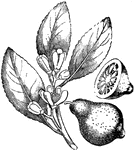
Lemon
The fruit of a small tree belonging to the same natural order as the orange. There are numerous varieties…

Papaw Tree
"A South American tree of the natural order Papayaceae of which order about 30 species are known which…
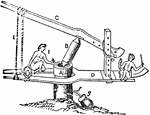
Chinapatam Sugar-mill
"The Chinapatam Sugar-mill consists of a mortar made by cutting down some hard-wood tree to within 2…

Tree Fern
"Scalariform or ladder-like prismatic vessels of a Tree Fern." — Encyclopedia Britanica, 1893
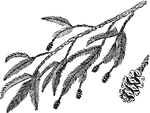
Redwood Branch
A Californian timber tree. Grows 200 to 300 feet high and have a thick cinnamon colored bark. The inside…

Shield-Budding
"The simplest and most generally practised form of budding is that called Shield budding or T-budding.…

Dwarf-Tree Pruning
"This image gives a good idea of how these drawf trees are to be manipulated, a showing the first year's…

Pyramid Pruning
"a shows a young tree with its second year's growth, the upright shoot of the maiden tree having been…
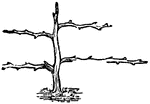
Horizontal Shaped Pruning
"Pruning for Horizontally-Trained Tree, Third Year." — Encyclopedia Britannica, 1893
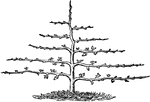
Horizontal Shaped Pruning
"Pruning for Horizontally-Trained Tree, Fifth Year." — Encyclopedia Britannica, 1893
Pruning
"The nature of the cut itself in pruning is of more consequence, especially in the case of fruit trees,…

Pruning
"The nature of the cut itself in pruning is of more consequence, especially in the case of fruit trees,…
Pruning
"The nature of the cut itself in pruning is of more consequence, especially in the case of fruit trees,…
Pruning
"The nature of the cut itself in pruning is of more consequence, especially in the case of fruit trees,…
Pruning
"The nature of the cut itself in pruning is of more consequence, especially in the case of fruit trees,…
Pruning
"The nature of the cut itself in pruning is of more consequence, especially in the case of fruit trees,…

Summer Pruning
"Summer Pruning should be performed while the shoots are yet young and succulent, so that they may be…

